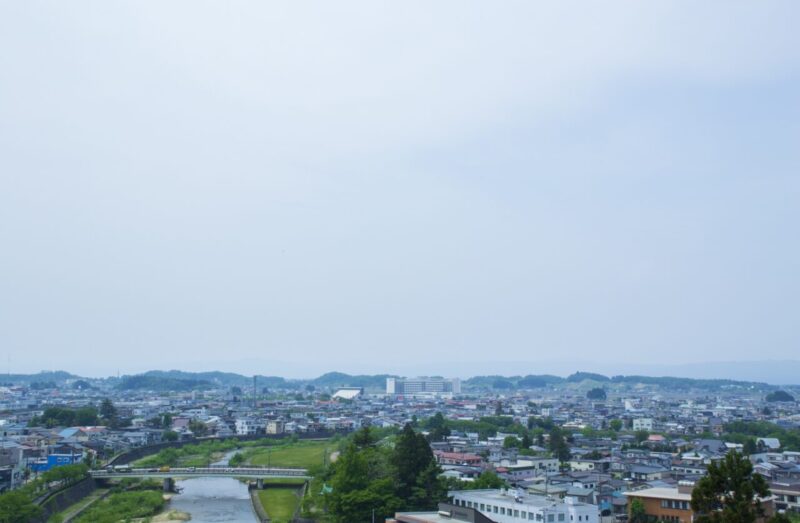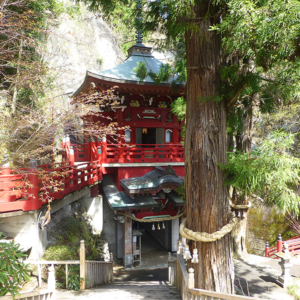
[Series ⑥: The role of the first nine years and the role of the second three years] From the internal conflict in the Kiyohara clan to the battle for the family succession, the role of the third year after it was considered a private war
table of contents
- 1 What are the roles of the previous nine years and the latter three years (Zenkunen no Eki and Gosannen no Eki)?
- 2 Kei becomes increasingly dissatisfied with Yoshiie's distribution of territory.
- 3 Kaei suddenly attacks Kiyohira! Kiyohira asks Yoshiie for reinforcements.
- 4 Click here for details and information about Go Sannen no Yaku
- 5 summary
- 6 Serialization: The role of the first nine years, the role of the second three years
With Mae Kiyohara (Kiyohara no Sanehira) dying of illness, the internal conflict within the Kiyohara clan finally came to an end.
By the ruling of Minamoto no Yoshiie, Mutsu no kami, the six districts of Okuroku, which were Mae's territory, were divided into two brothers, Iehira and Kiyohira. It was divided into three districts each.
However, this led to a dispute between the brothers over the head of the family.
What are the roles of the previous nine years and the latter three years (Zenkunen no Eki and Gosannen no Eki)?

It was fought in Tohoku (Iwate Prefecture and Akita Prefecture) from 1051 (Eisho 6) to 1062 (Kohei 5) and from 1083 (Eiho 3) to 1087 (Kanji 1) at the end of the Heian period. There are two campaigns.
The War of the Nine Years was a campaign in which the Minamoto clan, dispatched by the imperial court, quelled the rebellion of the Abe clan, which was growing in power in Mutsu (Iwate Prefecture), with the help of the Kiyohara clan.
After that, an internal conflict arose in the Kiyohara clan, which had strengthened its control from Mutsu to Dewa (Akita prefecture), and the dispute over the family headship developed into a battle during the War of the Third Year, and the Minamoto clan was also here. is deeply involved.
These two campaigns led to the establishment of the Oshu Fujiwara clan in Hiraizumi, Iwate Prefecture, and the bond between the Minamoto clan and the samurai of eastern Japan deepened, leading to the establishment of the Kamakura shogunate under Minamoto no Yoritomo.
Kei becomes increasingly dissatisfied with Yoshiie's distribution of territory.
There is no definitive record of how Yoshiie distributed the six districts of Mutsu to Ioe and Kiyohira.
According to one theory, he gave the northern three counties of Iwate, Shiwa, and Hienuki counties to Ioe, and the southern three counties of Waga, Esashi, and Isawa to Kiyohira, but there is no proof.
It is said that Kie was dissatisfied with Yoshiie's actions, as he was given the northern three counties, which had more mountains and less farmland, compared to the southern three counties, which had more fertile flatlands and yielded more crops.
At the root of this is the fact that, unlike Kiyohira, whose father was Fujiwara no Tsunekiyo, Kaori, who is descended from Kiyohara Takesada despite having the same mother, believes that he is legitimate. It seems that he was conscious of being his successor.
Why did Yoshiie divide the Okurakuni into half?

After Mae's death, it is said that his adopted son Naruhira, who was supposed to be his successor, died in battle, or that he was protected by Yoshiie and fled to Shimotsuke (Tochigi Prefecture), but it is unknown. .
Although there is no record that Ioe succeeded Mae, it is said that Ioe's residence was in Dewa and that he ruled over the three Dewa districts that had previously belonged to the Kiyohara clan. , it is thought that the keeper was actually the master carpenter.
However, he must not have been at peace since the area of the six Oku-gun districts was divided equally in half, and moreover, Kiyohira was given the most fruitful area.
However, it is believed that Yoshiie had anticipated this backlash from the retainers and was trying to strengthen his influence over the Kiyohara clan and Ou by creating a dispute over the family headship and getting involved in it by creating equality. There is a theory.
Yoshiie's reputation in the capital was lower than that of his younger brother Yoshitsuna, and it was said that Yoshitsuna had the unifying force of the Kawachi-Genji clan, and Yoshiie took advantage of the internal conflicts within the Kiyohara clan to control the Bando and Ou areas in the eastern region. Perhaps he was trying to find a way out.
Kaei suddenly attacks Kiyohira! Kiyohira asks Yoshiie for reinforcements.
In 1086 (3rd year of Ōtoku), the guards suddenly attacked Kiyohira's mansion, and although Kiyohira managed to escape, his entire family, including his wife and children, were killed, so he asked Yoshiie for help.
Enraged by the attack on the guard, Yoshiie requests the imperial court to send his younger brother Yoshitsuna to attack the guard, but this is not approved, and his own forces and Kiyohara's forces attack the swamp fence where the guard is trapped. : Yokote City, Akita Prefecture).

Battle of Numakase, where Mutsu no kami, who supported Seie, was defeated.
The combined forces of Yoshiie and Kiyohira were said to have been unprepared for a siege to attack the stockade, and due to the winter season, they retreated after a difficult battle.
Takehira, Iie's uncle, was delighted with his victory over Minamoto no Yoshiie, a highly respected samurai, and joined as an ally, forming an alliance at the impregnable Kanazawa Stockade (Yokote City, Akita Prefecture). I suggest resisting the military.
The Battle of Kanazawa Stockade, which resulted in a disastrous supply raid

The Imperial Court judged the Kiyohara clan's conflict to be a private war, and instead of sending reinforcements to Yoshiie, they simply decided to dispatch a government envoy to inform Yoshiie that the Battle of Oshu had ceased.
One of Yoshiie's younger brothers, Yoshimitsu, heard about his older brother's struggle, and without the permission of the Imperial Court, he gave up his official position and everything else and headed to Mutsu.
In the fall of 1087 (the first year of the Kanji era), the Yoshiie-Kiyohira allied forces attacked the Kanazawa stockade's guard and military guard, but it was difficult to take down this well-defended stockade, and the allied forces were able to capture it through a food raid.
Kei and Wuwei were caught hiding after escaping through the stockade, and were beheaded.
In this way, the Go Sannen War (also known as the Battle of the Later Three Years), which began as a trivial internal dispute, came to an end, and Kiyohira, who was not related by blood, became the leader of the Kiyohara clan.
Click here for details and information about Go Sannen no Yaku

There is an article that explains Go Sannen no Yaku (Go Sannen no Kassen) in more detail. If you would like to know more about it or visit the remains of the fence, please refer to this article.
summary
The Imperial Court considered the War of the Third Year to be nothing more than Yoshiie's personal war, and not only was there no reward but also no payment for the war expenses, and Yoshiie was dismissed as Mutsu no kami.
In addition, because the war expenses were raised from taxes sent to the Imperial Court, due to this blame, he was unable to hold a government position for a while and had a bad time (Go to the final episode of 9th year's first role and 3rd year's role 7) Continue).









![[Series ⑦: The first nine years of roles and the second three years of roles] The bond between the Genji and Togoku warriors, and the beginning of 100 years of prosperity of the Oshu Fujiwara clan Mokoshiji Garden Oizumi Pond in Winter](https://jp.neft.asia/wp-content/uploads/2023/12/75325853c50b8afdb1ab8cca28718b3a-150x150.jpg)
![[Series ②: The role of the previous nine years and the role of the second three years] The role of the previous nine years is from the truce to the battle again, and the Kokufu army is struggling Taga Castle Ruins](https://jp.neft.asia/wp-content/uploads/2023/11/a0b8b1213124e7a13c7308fa81e053a2-150x150.jpg)
![[Series ⑤: The role of the previous nine years and the role of the second three years] 20 years after the role of the previous nine years, signs of war once again spreading to Ou Minamoto Yoshiie 2](https://jp.neft.asia/wp-content/uploads/2023/11/43170603cd506225e1e986eec406b569-150x150.jpg)
![[Series ③: The role of the previous nine years and the role of the second three years] Abe's army, which boasts unparalleled strength, is forced into a predicament by Minamoto no Yoriyoshi Minamoto Yoshiie](https://jp.neft.asia/wp-content/uploads/2023/11/134a54642694b5a7a2440647a33b73be-150x150.jpg)
![[Series 1: The role of the previous nine years and the role of the later three years] Why did the Ou War at the end of the Heian period take place? Shiba Castle Ancient Park](https://jp.neft.asia/wp-content/uploads/2023/11/6e4e9113cd864c9d5892db200df1ec1c-150x150.jpg)
![[Series ④: The role of the previous nine years and the role of the second three years] Mr. Kiyohara's participation in the war completely changed the flow of the role of the previous nine years 1000310_m](https://jp.neft.asia/wp-content/uploads/2023/11/1000310_m-150x150.jpg)
![Hiyama Ando clan, ruled Akita during the Sengoku period and based in Noshiro [Akita Prefecture] Akita Fan](https://jp.neft.asia/wp-content/uploads/2025/03/0275d341934f847be3452ea4662d9a4e-150x150.jpg)
![The place you should not come and the phantom checkpoint "Nakura no Seki" written in waka poetry [Fukushima Prefecture] 0438-016](https://jp.neft.asia/wp-content/uploads/2022/11/0438-016-150x150.jpg)











